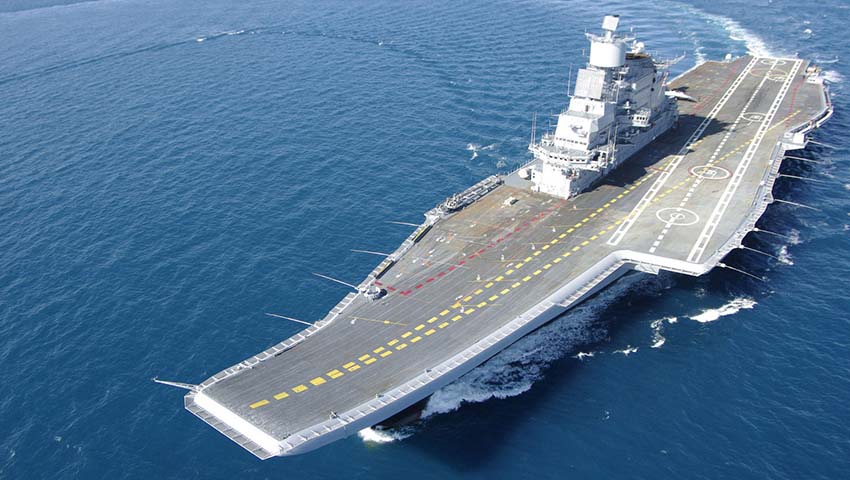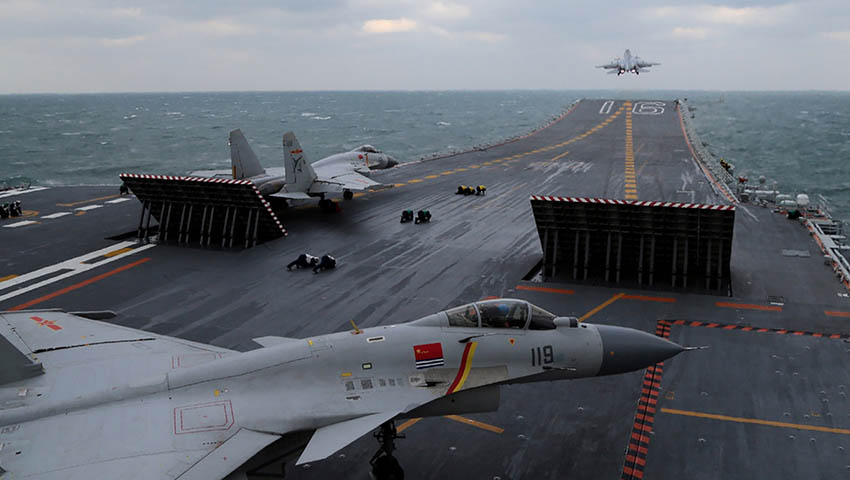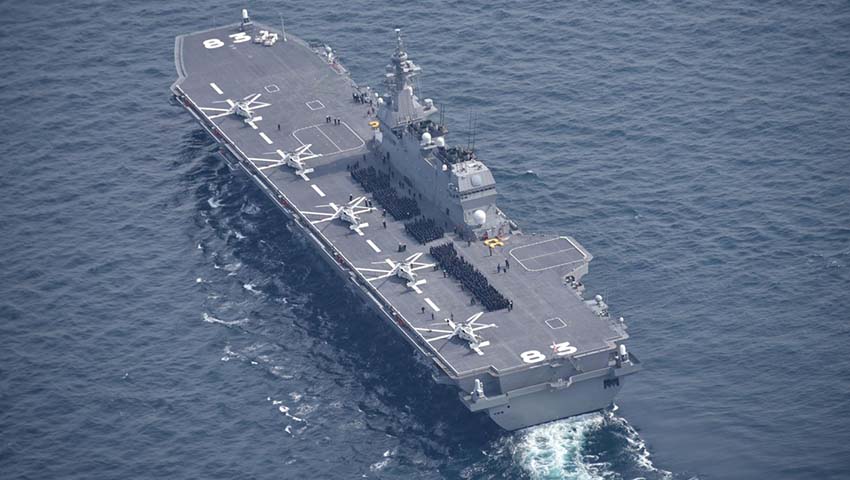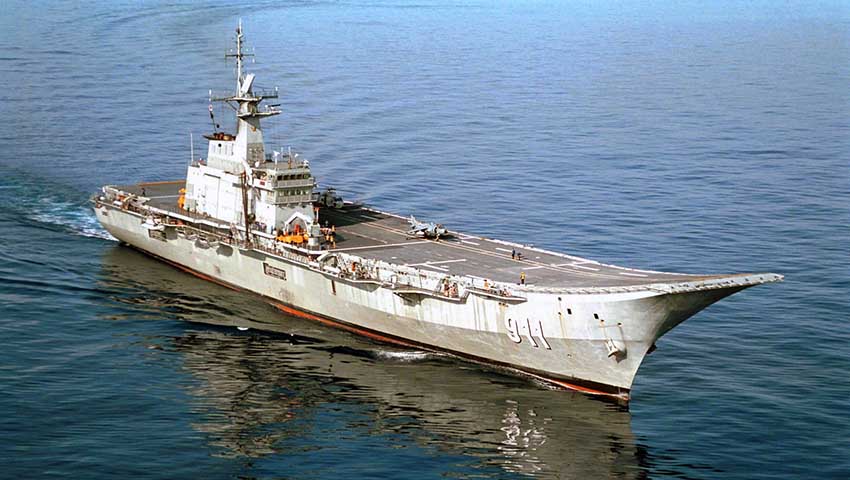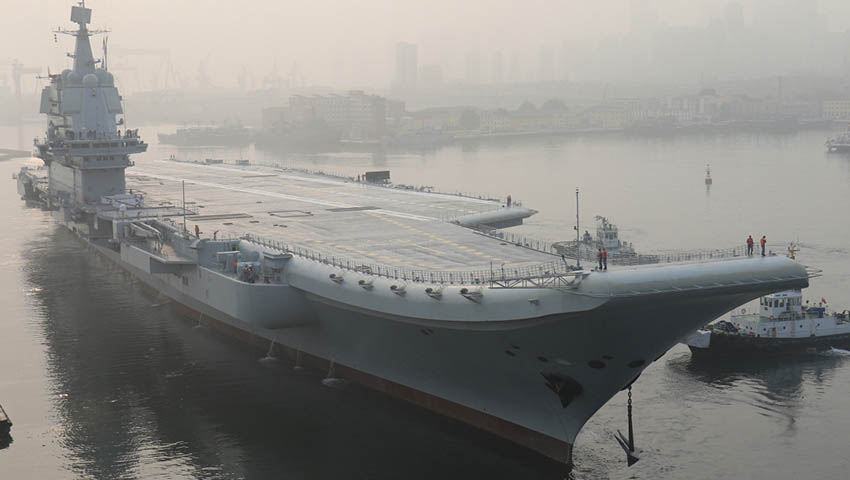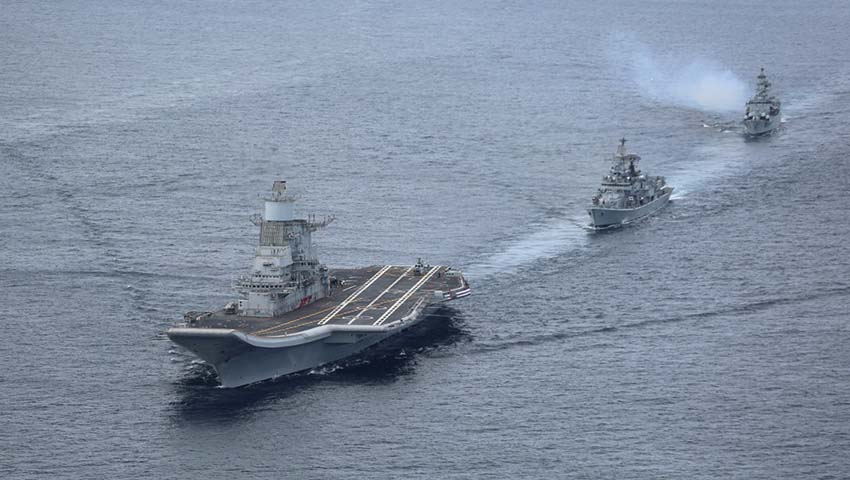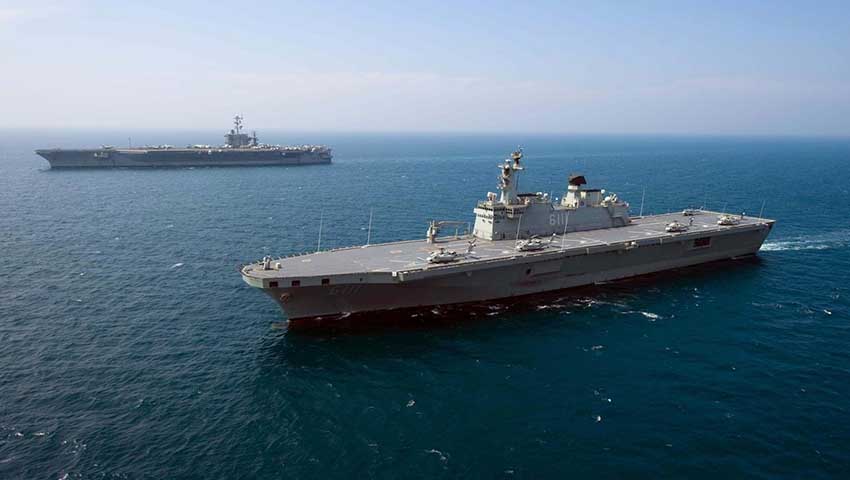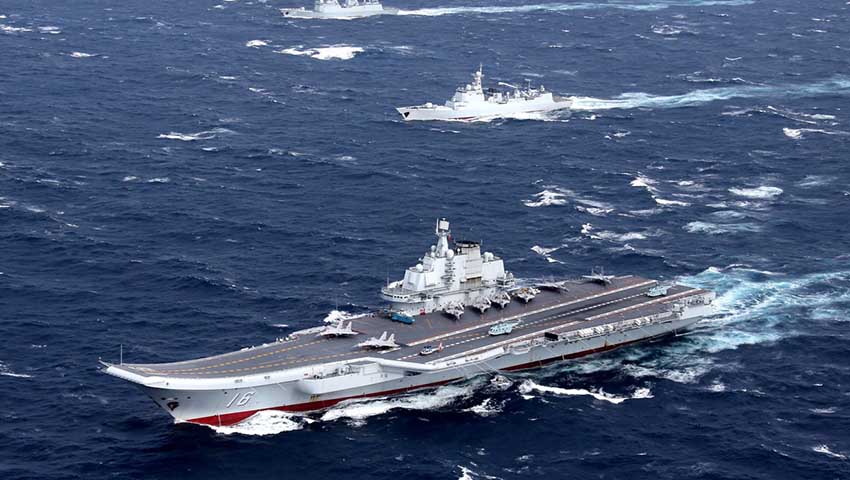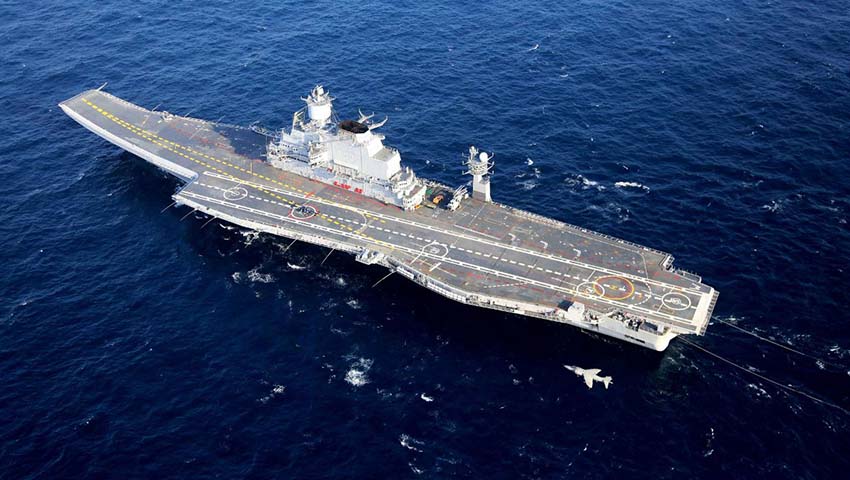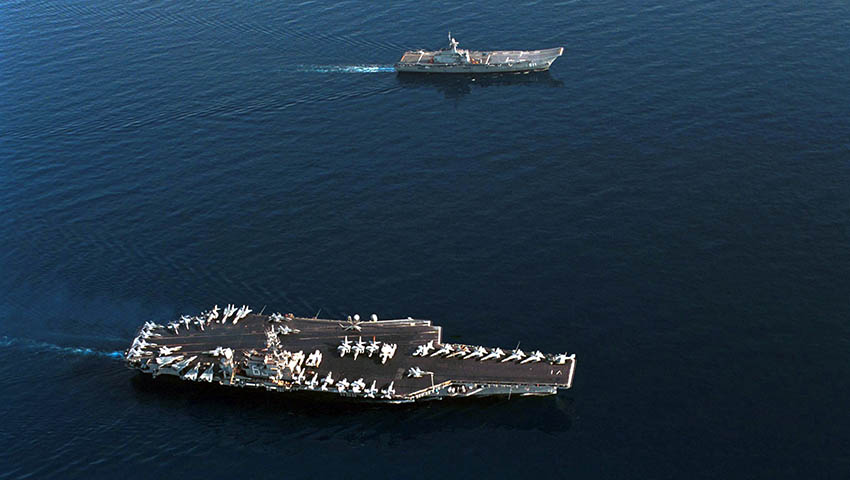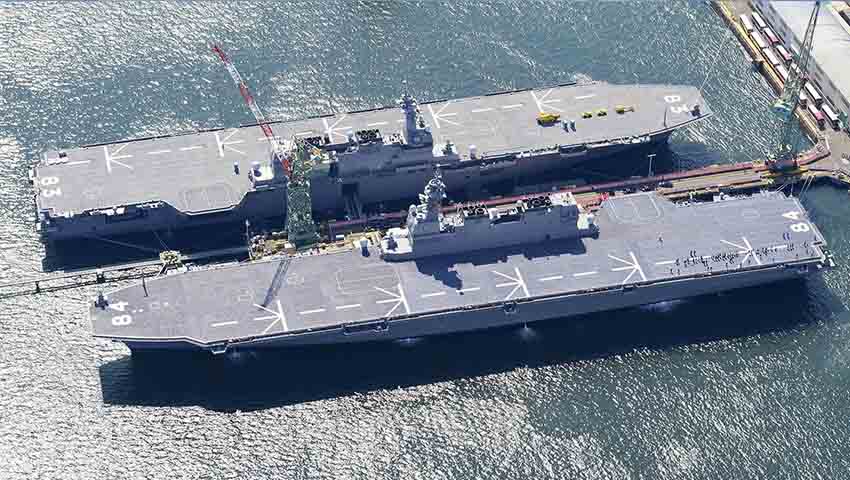image-1 = images/AircraftCarriersIndoPacific/INS-Vikramaditya-dc.jpg
title-1 =
description-1 = The vessel is a modified Kiev Class aircraft carrier, entering service in 2013 with the Indian Navy. She was renamed in honour of Vikramaditya, a former Emperor of Ujjain, India. The official anticipated life span of the ship is 40 years, and is unlikely to require any major repair work for a decade.
status-1 = 1
image-2 = images/AircraftCarriersIndoPacific/China-Liaoning-2-AFP-dc.jpg
title-2 =
description-2 = China's Lioaning vessel is a Type 001 aircraft carrier, and the first to be commissioned into the People's Liberation Army Navy (PLAN) Surface Force. Classified as a training ship, the purposes of the vessel are to allow China to gain familiarity with aircraft carrier operations. Image via AFP
status-2 = 1
image-3 = images/AircraftCarriersIndoPacific/Japan-Izumo-class-dc.jpg
title-3 =
description-3 = Originally used as a helicopter carrier, JS Izumo, the lead ship of its class, will be converted into an aircraft carrier capable of launching the F-35B from its flight deck. The decision was made in Japan's defence plan that was introduced in December last year.
status-3 = 1
image-4 = images/AircraftCarriersIndoPacific/Thailand-Chakri-Naruebet-dc.jpg
title-4 =
description-4 = HTMS Chakri Naruebet is the flagship of the Royal Thai Navy and the country's only aircraft carrier. Originally designed to operate an air group of V/STOL fighter aircraft and helicopters, it is also fitted with an aircraft ski jump. Following the removal of the ships entire Harrier jet fleet in 2006, the Chakri Naruebet has seldom seen service, outside of training exercises, disaster relief operations, and transportation of the Royal Family of Thailand.
status-4 = 1
image-5 = images/AircraftCarriersIndoPacific/China-Liaoning-3-Xinhua-via-AP-dc.jpg
title-5 =
description-5 = The Liaoning is a former Soviet Navy Kuznetsov Class aircraft cruiser, with Ukraine selling the stripped vessel to a Chinese company in 1998. In 2012, the ship was rebuilt and commissioned into the PLAN as Liaoning in September 2012. The vessel can carry a total of 40 fixed wing and rotary wing aircraft. Image via Xinhua via AP
status-5 = 1
image-6 = images/AircraftCarriersIndoPacific/INS-Vikramaditya-2-dc.jpg
title-6 =
description-6 = The Vikramaditya was commissioned originally in 1987 with the Soviet Navy and later with the Russian Navy, and decommissioned in 1996. The carrier was purchased by India in 2004 at a price of US$2.35 billion. The deal also included the purchase of 12 single-seat MiG-29K and four dual-seat MiG-29KUB aircraft (with the option of 14 more aircraft) at US$1 billion, six Kamov Ka-31 reconnaissance and anti submarine helicopters, torpedo tubes, missile systems and artillery units.
status-6 = 1
image-7 = images/AircraftCarriersIndoPacific/Dokdo-South-Korea-dc.jpg
title-7 =
description-7 = Similar to Japan. South Korea's Dokdo Class carriers are designed to carry helicopters, however have the potential, and are heavily rumoured, to be eyed up as actual aircraft carriers by the Republic of Korea Navy (ROKN). In particular, South Korea is considering the purchase of F-35B fighters to operate from its Dokdo Class ships, which have a flight surface that can support VTOL jets.
status-7 = 1
image-8 = images/AircraftCarriersIndoPacific/China-Liaoning-Reuters-dc.jpg
title-8 =
description-8 = Liaoning is not fitted with any cruise missiles, and only equipped with air defence weapons, relying on its aircraft for surface attack. China currently has another carrier undergoing sea trials, Shandong, and is planned to be commissioned sometime next year. Image via AP
status-8 = 1
image-9 = images/AircraftCarriersIndoPacific/INS-Vikramaditya-3-dc.jpg
title-9 =
description-9 = The vessel successfully completed sea trials in July 2013, and aviation trials in September of the same year. Vikramaditya can carry a maximum of 36 aircraft: 26x Mikoyan MiG-29K multi-role fighters, 10x Kamov Ka-31 AEW&C and Kamov Ka-28 ASW helicopters.
status-9 = 1
image-10 = images/AircraftCarriersIndoPacific/Thailand-Chakri-Naruebet-2-dc.jpg
title-10 =
description-10 = Chakri Naruebet is fitted with two 0.5-inch machine guns and three surface-to-air missile launchers equipped with Mistral missiles. The vessel is reported to not have a functioning anti-aircraft defence system installed onboard. The vessel was launched in January 1996, after nearly three years of construction work, and commissioned in March 1997.
status-10 = 1
image-11 = images/AircraftCarriersIndoPacific/Japan-Izumo-Class-2-dc.jpg
title-11 =
description-11 = JS Izumo can carry up to 28 aircraft or 14 larger aircraft, however its capabilities of carrying the F-35B are estimated at "around a dozen". Japan has also revealed that it doesn't expect to permanently assign an F-35B squadron to the Japanese Maritime Self-Defense Force’s (JMSDF) largest warship.
status-11 = 1
image-12 = images/AircraftCarriersIndoPacific/South-Korea-Dokdo-dc.jpg
title-12 =
description-12 = South Korea's second Dokdo Class vessel, Marado, is due to be commissioned within the next year, and has a flight deck capable of accommodating two V-22 Osprey aircraft. However, if the Dokdo Class was refurbished to carry F-35Bs, it has been suggested that they would have to undergo significant renovations that would likely cause them to lose their amphibious capabilities.
status-12 = 0
image-13 =
title-13 =
description-13 =
status-13 =
image-14 =
title-14 =
description-14 =
status-14 =
image-15 =
title-15 =
description-15 =
status-15 =
image-16 =
title-16 =
description-16 =
status-16 =
image-17 =
title-17 =
description-17 =
status-17 =
image-18 =
title-18 =
description-18 =
status-18 =
image-19 =
title-19 =
description-19 =
status-19 =
image-20 =
title-20 =
description-20 =
status-20 =
Photo Essay: Carriers of the Indo-Pacific
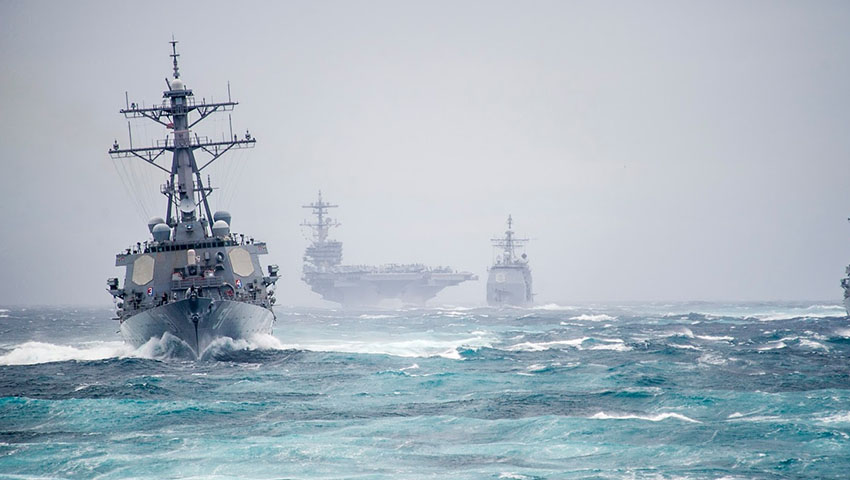
Click to launch gallery
Scroll to read and see more
As debate continues to blaze about the viability of re-introducing aircraft carrier vessels into the Royal Australian Navy, Defence Connect will highlight the carrier capabilities of our Indo-Pacific neighbours.
As debate continues to blaze about the viability of re-introducing aircraft carrier vessels into the Royal Australian Navy, Defence Connect will highlight the carrier capabilities of our Indo-Pacific neighbours.
You’re out of free articles for this month
To continue reading the rest of this article, please log in.
Create free account to get unlimited news articles and more!
For the purpose of this photo essay, we have decided to exclude the US, due to the sheer number of aircraft carriers they have in operation, with their fleet deserving of an independent analysis piece.
In recent years, Indo-Pacific Asia has seen a growing number of traditional aircraft carriers and large deck, amphibious warfare ships being used to secure sea-lines-of-communication and maritime borders, while acting as potent power projection platforms through the use of amphibious operations and potent marine units.
In this photo essay, we will take a look at China's Liaoning aircraft carrier, the first of a rising number of these vessels that Beijing is introducing into their fleet; India's modified Kiev Class aircraft carrier, Vikramaditya; Japan's Izumo Cass with its intention of fitting the vessels out with F-35B aircraft; South Korea's Dokdo carrier; and Thailand's Chakri Naruebet vessel.

 Login
Login



